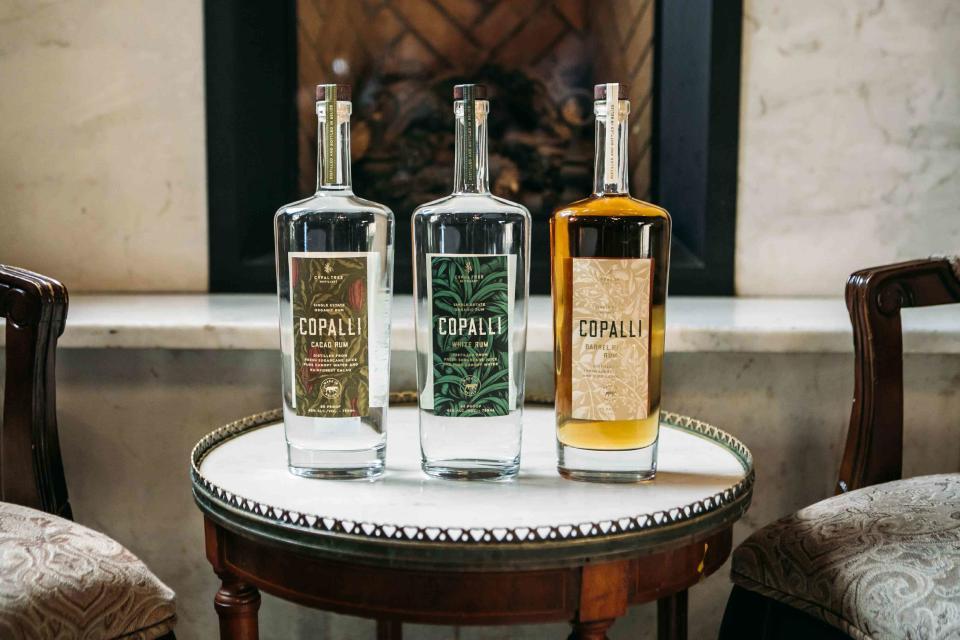What's the Difference Between White Rum and Dark Rum?
Before you make your next Daiquiri, make sure you're using the right rum.

Courtesy of Copalli Rum
One morning last month, in the rainforest of southern Belize, I started my day by harvesting two different types of organic sugar cane with a machete — not my usual way to start a Tuesday, but a seriously enlightening one.
At first glance, they were difficult to distinguish from one another. Both were taller than me, and had woody appearances somewhat reminiscent of bamboo. But once we hacked into them, sliced off a six-inch piece and began chewing, their differences became abundantly clear: The black cane had a sweeter, more caramel-like character with hints of blackberries and plums. The red cane, on the other hand, was less intense but had a slightly longer finish, with suggestions of honeydew. It was a visceral lesson in just how complex the world of rum is at all stages of its production.
Related: Love a Daiquiri? Here are 15 Rum Drinks To Try Next
I was in Belize to learn more about Copalli Rum, a relatively young brand that is growing its footprint in the United States, and has had a tremendously positive impact on Southern Belize already. They’ve preserved more than 13,000 acres of rainforest there, grow their cane organically, operate a zero-impact distillery for their agricole-style rums, and invest heavily in programs for the local community. What surprised me was just how bright a light my time there threw not just on the raw materials that go into top-quality rum, but also on how barrel aging affects the finished product.
Later that day, I sat down with the Copalli team to taste not just their excellent white rum, but also a selection of barrel-aged samples of various ages, in order to explore how wood impacts the final liquid. It was a fascinating experience, and embodied so much of what sets white rum and dark rum apart…as well as why that sort of either-or language is often inadequate to fully describe the impact that aging has on the spirit.
“Aging adds amazing complexity to rum, but timing is everything,” explained master distiller Eligio Rivas Fromherz. “As with other spirits, there is seasonality and artistry to aging. Aging adds and enhances rum’s natural flavor notes, taking on characteristics of the wood: The oakiness, caramels, vanillas, and of course color. Over time, the wood has less impact, and the rum starts developing an enhanced sweetness of its own.”
Related: Black Manhattan
But rum (like whiskey) doesn’t age in a smooth, predictable progression. “Often, you’ll find peaks and valleys in the aging process where the balance imparted by the aging hits your palate right or, quite frankly, takes on an unpleasant sharpness,” Rivas Fromherz continued. “More important than the age of the rum is the timing the master distiller uses in the process, the timing and technique of moving rum from the barrels in the precise moment where the balance between the base rum, barrel flavors, and a soft sweetness peak.”
I found this out for myself during the tasting that afternoon: The differences between the white rum and the two-, three-, four-, and five-year samples were significant, and the interplay between the spirit and the wood didn’t appear to be happening at a constant rate. Deciding when to end the barrel aging requires a deft hand and constant tasting on the part of the master distiller. It also highlighted the external factors that affect aging rum.
For more Food & Wine news, make sure to sign up for our newsletter!
Read the original article on Food & Wine.

